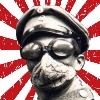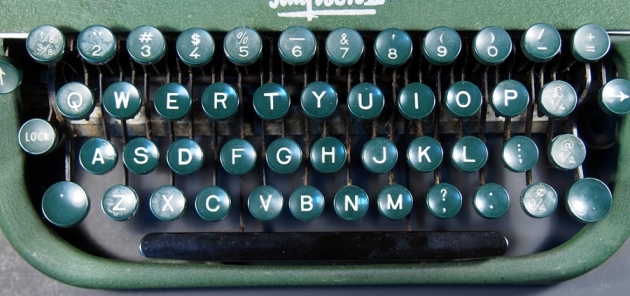
- T1peM0nkey
- New Member
 Offline
Offline - From: Ohio
- Registered: 12-1-2015
- Posts: 15
Help Solve a Mystery - SX Prefix on Royal 10 Typewriters
Typospherians-
I am T1peM0nkey, and I'm new here. Now that that is out of the way, down to the business at hand.
With the help of other typospherians, I am attempting to solve the mystery of the 'SX' prefix on Royal 10 Standard machines. Since I began my list of machines we have figured out a lot, and I would like to thank the Davis brothers, Mr. Burbano, and Mr. Weil for their assistance in this endeavor thus far.
We now know the following:
In the late 1920s Royal dropped the '10' decals from their machines and stopped using the designation in their advertising. They were still known as the '10' as an internal designation in Royal. In 1928 at serial number 1,200,000 'SX' appeared but was not stamped on any machines. 'SX', as far as we can tell, designates 'Segment-Shift Ten'. The reason that SX wasn't stamped on machines when the internal designation came about is because the segmented machines were wide-carriages, and those get the platen size in inches as a prefix. The first 10s to be changed to segment shift were the 18-inch and wider carriage machines starting in 1928 at serial number 1,200,00. In late 1929 the 14-inch carriages went segment at 1,330,000 and then the standard-sized carriage (at the time Royal's standard carriage size was 10-inch) machines were converted to segment toward the end of 1931 at 1,470,000. The 10-inch standard machines didn't need a prefix for size and were stamped 'SX'.
With that sorted out, I am now trying to pin down specific features of these machines to determine commonality and a closer estimate of when Royal 10s were discontinued. I'm interested in decimal tabulators, keyboard layouts, carriage widths, condition, etc.
1. Is the machine equipped with a decimal tabulator? If it is equipped with one, there would be a row of keys above the keyboard that say from left to right:" . 1 10 100 1000 ". If so, is the print black on a white background or white on a black background? If there are these keys, please note whether the color arrangement matches the keyboard or not. Some are known to differ. There would also be a column on the back of the machine if it is equipped with a decimal tabulator. Are there any decals on this column? There may be a Royal logo and then the manufacturing information decal below it. Some are known not to have these decals.
2. What colors are the keys? Are they white letters on a black background or black letters on a white background? Do the shift keys say 'SHIFT' or 'SHIFT KEY'? Does the tab key say 'TABULATOR', 'TAB' or 'TABULATOR KEY'? The arrangement of the lower right corner's keys will either be [nm,./] [NM,.?] or [nm,./] [NM?.¾].
3. Is the keyboard arrangement foreign? QWERTZ is German, AZERTY is French. The machine is Canadian if it has the £ symbol on one of the keys.
4. Please note whether or not there is a 'Royal' decal on the curved faceplate over the keyboard.
5. There may be remnants of red detailing paint inside the numbers on the paper bail and on the tabulator bar on the farthest back part of the carriage.
6. Is there a plate enclosing the bottom of the machine?
7. Is the text on the margin release curved around the keytop or straight across?
If your machine is a wide-carriage Royal 10 from 1927 forward, I would also appreciate the details on those as well.
Here is an example machine record that is created with that information:
SX-1569247: Ian Brumfield. 1933. Condition: Under restoration. Accounting: No. Black on white keys. Bottom right corner keyboard: [nm,./] [NM,.?] Other keys written as: SHIFT, TABULAR. Margin release: Curved. Location: The Brumfield & Sons Typewriter Co. Collection.
- JustAnotherGuy
- Speed Champion
 Offline
Offline 
- From: Illinois, USA
- Registered: 20-9-2014
- Posts: 277
Re: Help Solve a Mystery - SX Prefix on Royal 10 Typewriters
T1peM0nkey wrote:
3. Is the keyboard arrangement foreign? QWERTZ is German, AZERTY is French. The machine is Canadian if it has the £ symbol on one of the keys.
Wouldn't the pound sign be on a British keyboard? I'm pretty sure Canada uses dollars.
Anyway, wish I could help but both of my Royal 10's are X models. Good luck with your hunt!
- Uwe
- Moderator
 Offline
Offline 
- From: Toronto, Canada
- Registered: 12-3-2013
- Posts: 4,410
Re: Help Solve a Mystery - SX Prefix on Royal 10 Typewriters
JustAnotherGuy wrote:
Wouldn't the pound sign be on a British keyboard? I'm pretty sure Canada uses dollars.
Canada used the pound as its currency up until 1865, long before the standard typewriter was being produced. You're right, most keyboards with the pound symbol are British. Most Canadian keyboards that have a pound key will also have a dollar key too, and in the case of this Canadian keyboard, also a cent key:
The pronoun I has always been capitalized in the English language for more than 700 years.
- T1peM0nkey
- New Member
 Offline
Offline - From: Ohio
- Registered: 12-1-2015
- Posts: 15
Re: Help Solve a Mystery - SX Prefix on Royal 10 Typewriters
Yes, I am aware of Canadian keyboards carrying both currencies. I should have specified both '$ and £' to make it clearer. We have a Remington in stock that was built in Canada and has a £ key, so that is my frame of reference.
Curiously enough, no SX tens have been recorded so far outside of the United States. The differences from keyboard to keyboard usually deal with the colors used; arrangement of the lower right keys; and the text on the shift, margin release, and tabulator key.
I am interested in tens with the 'S' prefix. A theory has been forwarded that S no longer stands for 'segment' but for 'standard'. By the time the S prefix appears Royal had been calling the ten the 'Royal Standard' for some time.
- •
- GavReeder
- New Member
 Offline
Offline - Registered: 19-1-2016
- Posts: 1
Re: Help Solve a Mystery - SX Prefix on Royal 10 Typewriters
Hi, I have just acquired a Royal 10 SX-1592350 in the UK.
Can you tell me anything about it? 1933 I think. Its not in great condition but I will have fun getting it working.
- ztyper
- Key Master
 Offline
Offline 
- From: Somewhere in New Jersey
- Registered: 01-10-2014
- Posts: 773
Re: Help Solve a Mystery - SX Prefix on Royal 10 Typewriters
Too lazy to do an actually check, but if it does have the "SX" prefix, 1933 sounds about right. The Royal SX is a basket shift typewriter, meaning the typebars go down instead of the carriage going up like earlier ones do, which is why the later ones are pretty cool. Other than basic functions, there's really nothing to working a Royal 10. Cleaning should be easy because the glass windows on the sides should pop out. And there are various other plates and covers you can remove too. Maybe someone can elaborate if I missed something?
Hope this helps!
A high schooler with a lot of typewriters. That's pretty much about it.
- ztyper
- Key Master
 Offline
Offline 
- From: Somewhere in New Jersey
- Registered: 01-10-2014
- Posts: 773
Re: Help Solve a Mystery - SX Prefix on Royal 10 Typewriters
By the way, the Royal 10 might be my favorite typewriter, so good score!
A high schooler with a lot of typewriters. That's pretty much about it.

 1 of 1
1 of 1